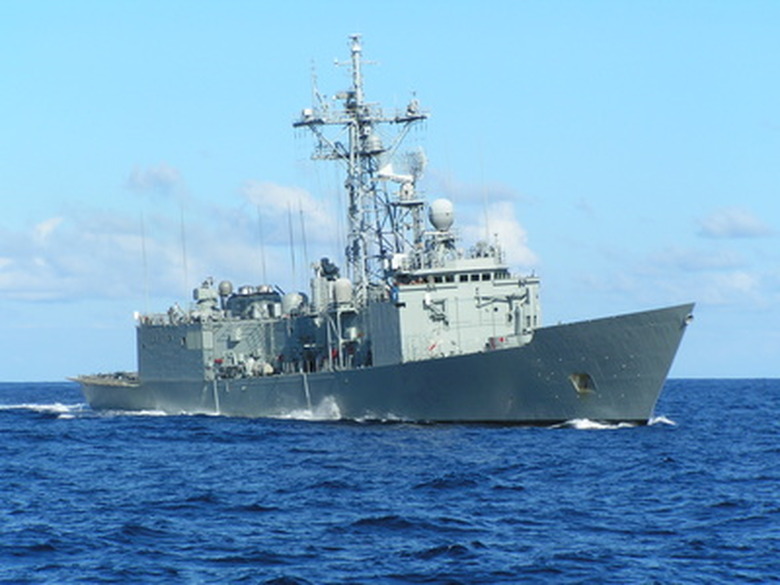Types Of Navy Patches For Damaged Pipes
Today's Navy uses internal piping infrastructures to support a host of vessel powerplants, including more traditional types such as gasoline/diesel engines to complex nuclear systems. Regardless of the plant itself, vessels depend on hundreds of pipes to manage a ship's operation, extending from high and low pressure to non-pressurized systems. In the event that any of these piping infrastructures are damaged when underway, the Navy utilizes several processes to plugs the leaks.
Pipe Clamps
Pipe Clamps
When facing a piping issue, the most traditional approach is to apply what are referred to as pipe clamps. These are circular metal assemblies that are hinged on one side to create a clam-shell configuration that is secured by wing nuts. These clamps are built to accommodate various pipe diameters, so depending to the size, a damage control member places the clamp on the pipe, closes the clam-shell, then secures the whole assembly to the pipe with the wing nuts, thereby sealing the hole.
Soft Patch
Soft Patch
For low-pressure pipe damage the Navy typically uses what are referred to as soft patches. These are flexible systems made of layers of rubber sheet, rags, oakum, marline, wire and canvas. When the patch is placed over the hole, the fluid leaking from the piping system begins to soften and melt the patch into the hole, sealing the breech. The downside of this system is that it cannot be used with any flammable leakage as the patch will be completely saturated with the fluid, creating an immediate fire hazard.
Emergency Water Activated Repair Patch (EWARP)
Emergency Water Activated Repair Patch (EWARP)
For either low or high pressure systems, the Navy suggests the Emergency Water Activated Repair Patch, pronounced as E-WARP. These are flexible patches made of dense fiberglass-woven tape covered by resin. The tape is very sticky and the approach is perfect for high-pressure and temperatures of up to 300 degrees Fahrenheit, as the adhesive bonds to a pipe quickly when heated. This process is typically used with fresh water, salt water, hydraulic or lubrication/oil systems, but is not used for steam or fuel piping because the caustic nature of these materials will weaken the patch breaking the seal.
Cite This Article
MLA
Carlton, Rick. "Types Of Navy Patches For Damaged Pipes" sciencing.com, https://www.sciencing.com/types-navy-patches-damaged-pipes-6360899/. 24 April 2017.
APA
Carlton, Rick. (2017, April 24). Types Of Navy Patches For Damaged Pipes. sciencing.com. Retrieved from https://www.sciencing.com/types-navy-patches-damaged-pipes-6360899/
Chicago
Carlton, Rick. Types Of Navy Patches For Damaged Pipes last modified March 24, 2022. https://www.sciencing.com/types-navy-patches-damaged-pipes-6360899/
